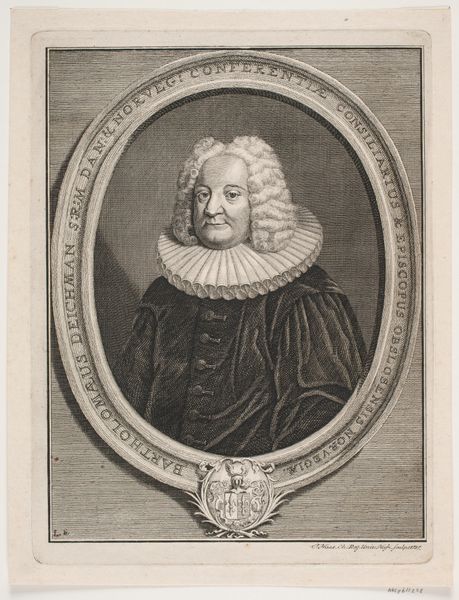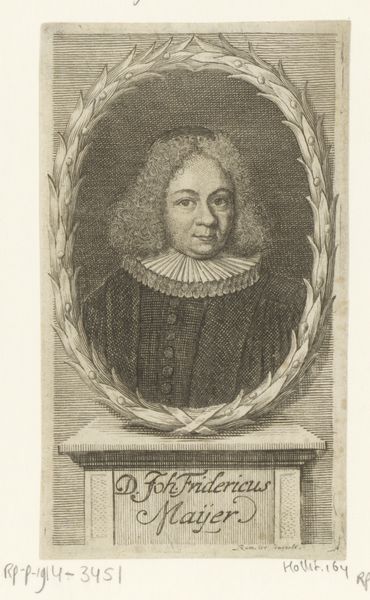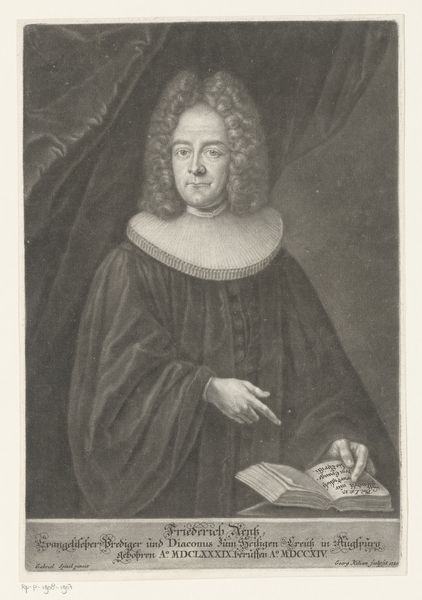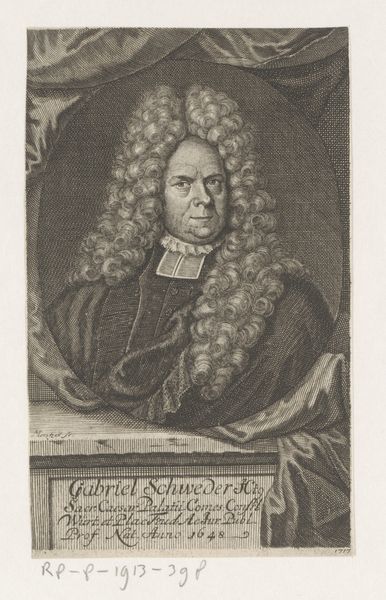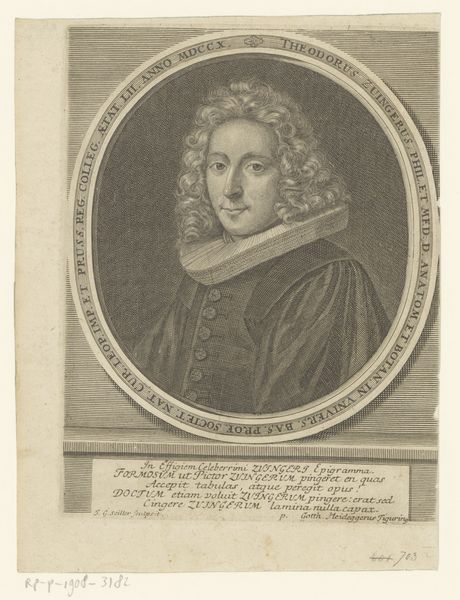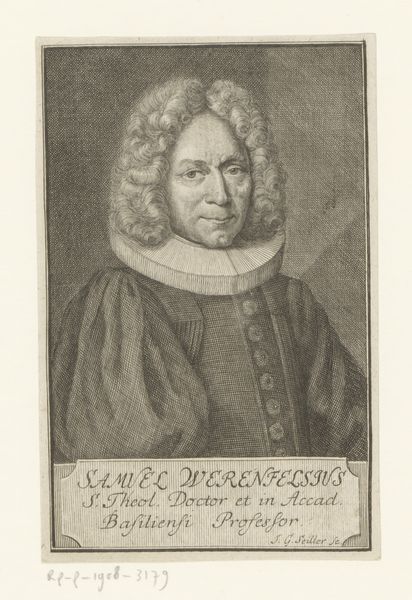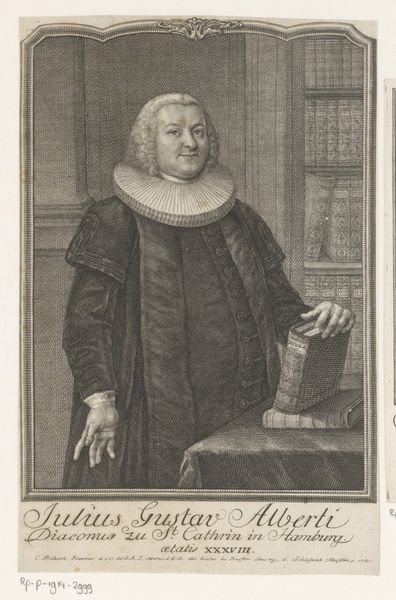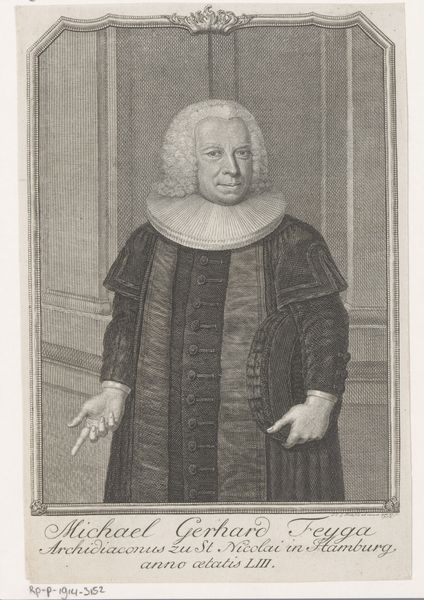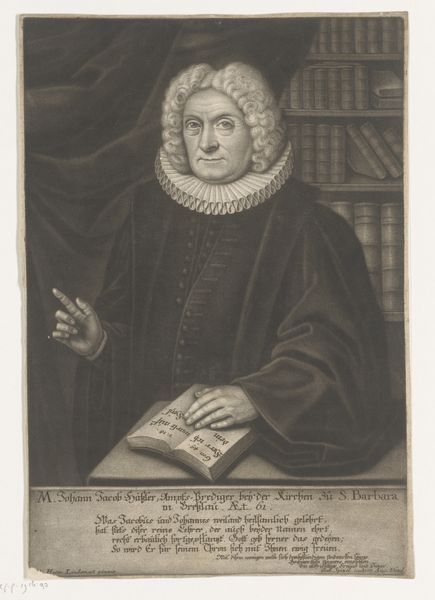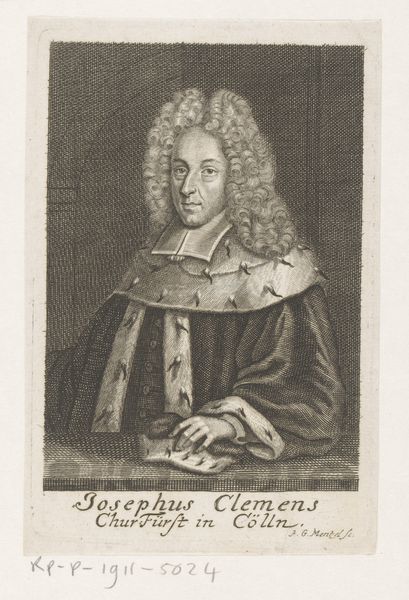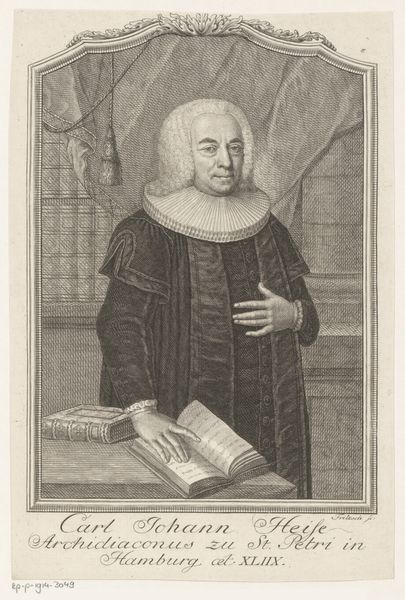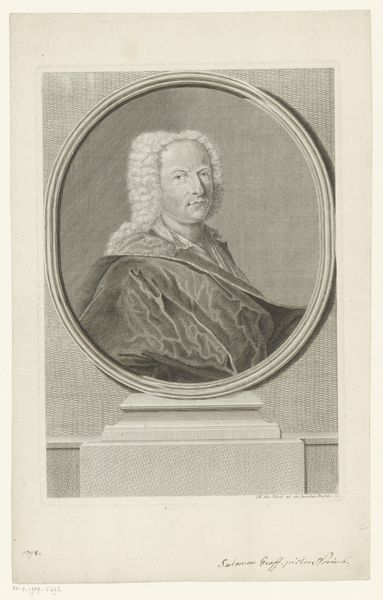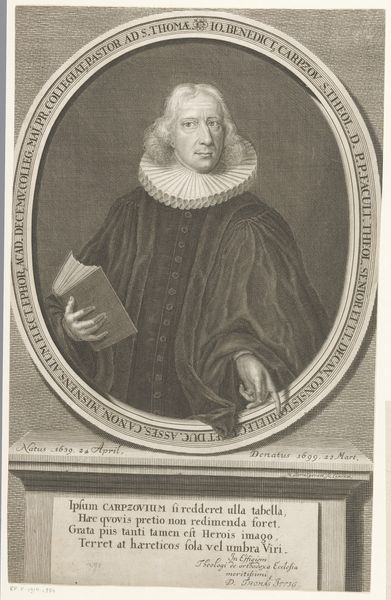
print, metal, engraving
#
portrait
#
baroque
# print
#
metal
#
old engraving style
#
engraving
Dimensions: height 154 mm, height 91 mm
Copyright: Rijks Museum: Open Domain
Editor: So, here we have "Portret van Johann Konrad Spoerl," created sometime between 1732 and 1777 by Michael Rössler. It's a Baroque-style print, an engraving on metal, residing in the Rijksmuseum. The details created by the engraving process are pretty amazing. What aspects of its historical context should we consider when appreciating it? Curator: Looking at this engraving, I am drawn to the socio-economic context that allowed for its production. The materials—metal plate, inks, and the tools needed for engraving—all signify a certain level of industrial development and economic investment. Also consider labor division. An engraver creates a representation, but from an original, a painting made by another author; how the division of art making enables the dissemination of art as a commodity? Editor: That's an interesting point. It definitely brings a different perspective compared to thinking about it as solely artistic expression. Was this accessibility typical of the time, and what impact might it have had? Curator: Exactly! Consider the printmaking process itself: It democratizes image distribution. Unlike unique paintings, engravings allowed for reproduction, making art more available, at least to a middle class. The existence of prints created demand of raw materials for pigments, of guilds ensuring high craftsmanship... who consumed it, and what did it mean to possess this likeness? These are vital questions to me. Editor: I never really considered how something like this functions as a product of labor, rather than solely as art. Thinking about accessibility and consumption patterns in the 18th century is definitely a novel approach for me. Thanks! Curator: Considering how these images circulated and were consumed shifts the focus from authorial genius to systems of production and social history of images, doesn't it?
Comments
No comments
Be the first to comment and join the conversation on the ultimate creative platform.
